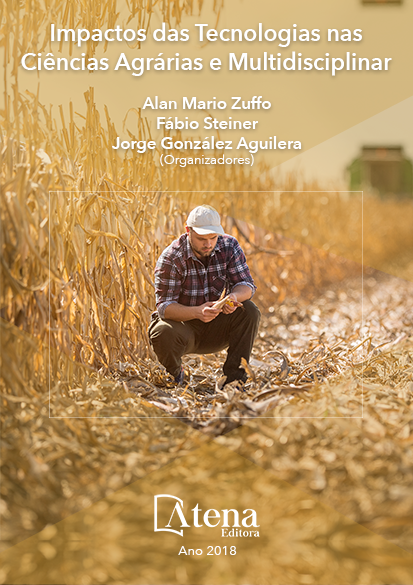
ALELOPATIA E EFEITO BIOHERBICIDA DE EXTRATOS DE Myrsine umbellata Mart: APLICAÇÕES EM Lactuca sativa L., UM MODELO VEGETAL
Myrsine umbellata Mart é uma
espécie de grande importância ecológica por
ser considerada pioneira. Entretanto, existem
poucos relatos sobre sua composição química
e sobre o efeito que a mesma exerce sob outras
espécies. O reconhecimento dessa interação
é importante visto que é determinante para
reestruturação de florestas devastadas. Além
disso, a existência de alelopatia pode ser um
indicativo de um possível herbicida natural,
substituindo assim os artificiais, que podem
causar sérios danos ao ambiente. O objetivo
do presente trabalho foi avaliar o potencial
alelopático do extrato aquoso de folhas de
M. umbellata no desenvolvimento inicial e no
ciclo celular de sementes de Lactuca sativa
L. por meio de ensaios de fitotoxicidade e
citotoxicidade. Cinco tratamentos (100mg/
mL, 50mg/mL, 25mg/mL, 12,5mg/mL e água)
foram utilizados após o preparo dos extratos
foliares. Verificou-se diferenças significativas
nos parâmetros porcentagem de germinação,
crescimento radicular e aéreo, de modo que
houve uma queda nos valores em relação ao
controle negativo (água). Também verificou-se o
aumento no níveis de alterações cromossômicas
(AC) e nucleares em todos os tratamentos com
extrato aquoso avaliados. O extrato promoveu
dois mecanismos de ação: aneugênico e
clastogênico, evidenciados a partir das ACs,
aderência e pontes, respectivamente. Esses
resultados sugerem que M. umbellata possui
vantagens em ambientes naturais devido sua
ação alelopática, bem como evidencia seu
potencial bioherbicida.
ALELOPATIA E EFEITO BIOHERBICIDA DE EXTRATOS DE Myrsine umbellata Mart: APLICAÇÕES EM Lactuca sativa L., UM MODELO VEGETAL
-
DOI: Atena
-
Palavras-chave: alface, citotoxicidade, fitotoxicidade, herbicidas naturais.
-
Keywords: lettuce, cytotoxicity, phytotoxicity, natural herbicides
-
Abstract:
Myrsine umbellata Mart is a species of great ecological importance due to
be considered as a pioneer. However, there are few studies on its chemical composition
and its effect on other species. The recognition of this interaction is important since it
is determinant in the restructuring of devastated forests. Allelopathy may be indicated
as a possible natural herbicide, consequently replacing artificial ones, which can cause
serious damage to the environment. The objective of this study was to evaluate the
allelopathic potential of the aqueous leaf extract of M. umbellata in the initial development
and in the cell cycle of Lactuca sativa L. seeds through phytotoxicity and cytotoxicity
assays. Five treatments (100mg/mL, 50mg/mL, 25mg/mL, 12,5mg/mL and water)
were used after preparing the leaf extracts. Significant differences were observed in
the germination percentage, root and aerial growth, and there was a decrease in the
values regarding the negative control (water). There was also an increase in the levels
of chromosomal (AC) and nuclear changes in all treatments with aqueous extract. The
extract promoted two mechanisms of action: aneugenic and clastogenic, shown in the
ACs, adhesion and bridges, respectively. These results suggest that M. umbellata has
advantages in natural environments due to its allelopathic action, as well as its potential
bioherbicide.
-
Número de páginas: 15
- Thammyres de Assis Alves


